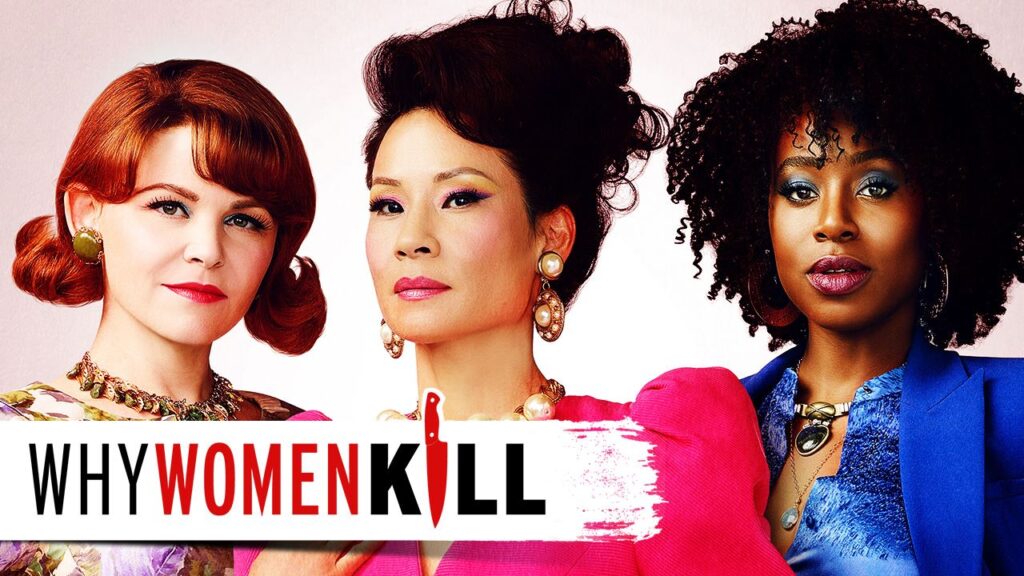Why Women Kill (Isn’t the Problem): A Look at the Evolving Landscape of Streaming
The title might be a bit of a head-turner, but fear not, this isn’t about blaming women for the state of streaming services. “Why Women Kill” is actually the name of a popular dark comedy anthology series that explores the complexities of women’s motivations throughout history.
However, the title cleverly serves as a jumping-off point to discuss a very real phenomenon: the constant churn and evolving landscape of streaming services. We’re bombarded with new platforms, rising subscription costs, and a seemingly endless sea of content. It’s enough to make anyone want to throw in the towel (or cancel their subscriptions).
The Rise and Fragmentation of Streaming
Streaming services started as a dream come true for viewers. No more rigid cable packages, just a world of on-demand content at our fingertips. But what began as a revolution has become a battlefield. Major studios and networks are launching their own platforms, pulling their content from established players like Netflix and Hulu. This fragmentation creates a confusing and expensive situation for viewers.
Here’s a breakdown of the current landscape:
- Subscription Fatigue: The average person subscribes to multiple streaming services, leading to “subscription fatigue.” Juggling logins, remembering what shows are on which platform, and the ever-increasing cost all contribute to viewer frustration.
- Content Wars: Studios are creating exclusive content for their platforms, locking viewers into specific subscriptions to access shows they love. This “content war” makes it difficult, and sometimes impossible, to find everything you want in one place.
- Cancellation Culture: Streaming services are quick to cancel shows, even those with dedicated fanbases. This leaves viewers with a sense of impermanence and discourages them from investing in new shows.
Beyond the Blame Game: The Real Issues
While the title might be provocative, it’s important to remember that women aren’t the problem. The real culprits behind the woes of streaming are:
- Greed and Exclusivity: The focus on maximizing profits and securing exclusive content partnerships comes at the expense of viewer experience.
- Lack of Standardization: There’s no standard pricing model or way to easily manage subscriptions across platforms. This creates a chaotic and frustrating experience.
- The Algorithm Trap: Streaming services use algorithms to recommend content, but these can often lead to viewers being stuck in echo chambers, never discovering new or diverse content.
What Can We Do?
So, what can be done to save streaming from itself? Here are a few ideas:
- Content Sharing and Aggregation Services: Imagine platforms that allow viewers to subscribe to specific shows or channels across different streaming services, instead of subscribing to entire platforms.
- Open Standards and Transparency: The industry needs to work together to create a more standardized and transparent system for pricing, content availability, and user data management.
- Focus on Quality over Quantity: It’s not about having the most content; it’s about offering high-quality, diverse programming that viewers actually want to watch.
- Viewer Empowerment: Give viewers more control over their experience. Allow them to easily manage subscriptions, curate watchlists, and discover new content that aligns with their interests.
Looking Ahead: A Sustainable Future for Streaming
While the current state of streaming might seem bleak, there’s still hope. As viewers become more vocal about their dissatisfaction, the industry is starting to take notice. Here are some positive trends:
- The Rise of Ad-Supported Tiers: Some platforms are offering ad-supported tiers alongside subscription plans, providing a more affordable option for viewers.
- Focus on User Experience: Platforms are investing in improving user interfaces, recommendation algorithms, and content discovery tools.
- Collaboration and Partnerships: There are early signs of collaboration between streaming services, such as co-productions and content licensing deals.
FAQ
Q: Is streaming dying?
A: Not necessarily. While there are challenges, streaming is still a rapidly growing industry. However, it needs to adapt to meet the needs of viewers or risk losing its appeal.
Q: What can I do as a viewer?
A: Be vocal about your frustrations and cancel subscriptions that don’t offer value. Support platforms that prioritize user experience and quality content. Consider sharing subscriptions with friends and family (if allowed by the platform’s terms of service).
Q: What’s the future of streaming?
A: The future is uncertain, but there’s hope for a more sustainable model that prioritizes collaboration, transparency, and viewer satisfaction.
In Conclusion
The title “Why Women Kill Streaming” was meant to be a play on words, sparking a conversation about the real challenges facing the streaming industry.



